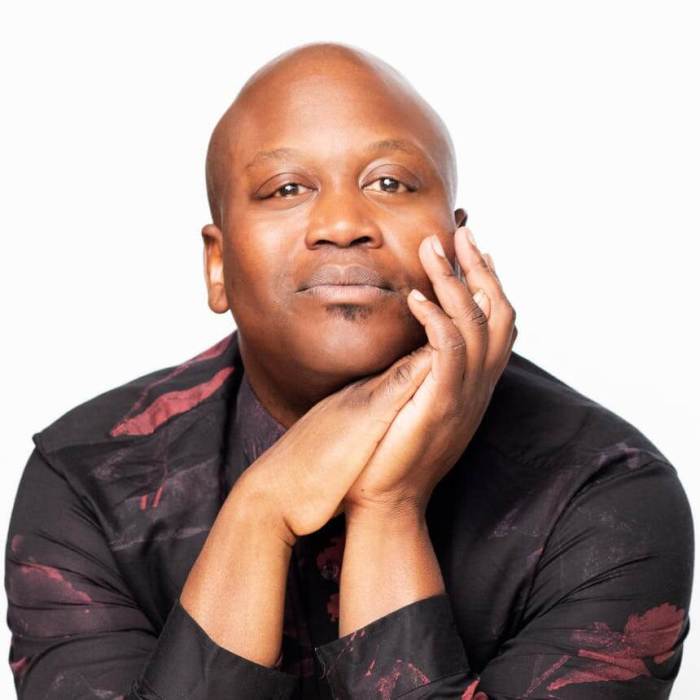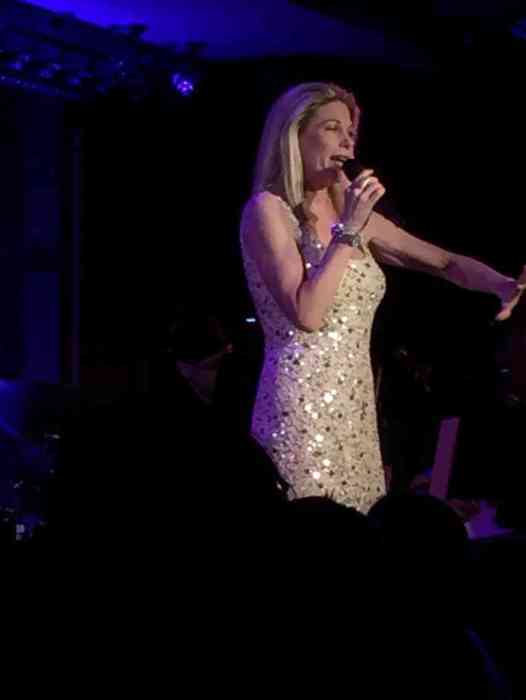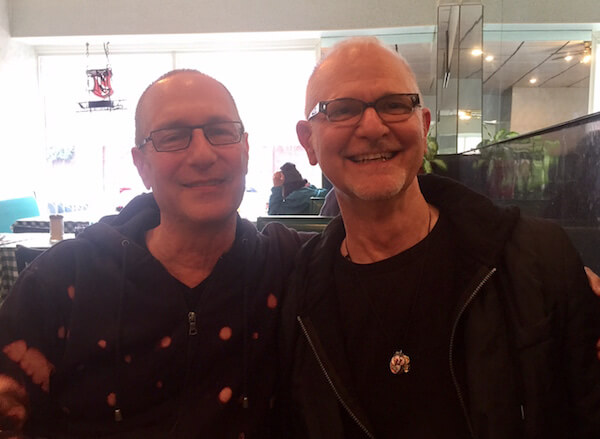It would seem inconceivable that there would be no recording, complete or with extended excerpts, of a seminal theater score by a major composer. Yet, that is precisely what has befallen Kurt Weill and Alan Jay Lerner’s 1948 “Love Life.” In a recording era when it seems that virtually every unknown piece of theater music –– whether opera (think George Frideric Handel’s “Elmira”) or musical (Heritor Villa Lobos’ “Magdalena,” to name one) –– has been recorded, it’s puzzling that “Love Life” has suffered from this grave omission.
To be sure, random excerpts do exist on the CD “Kurt Weill on Broadway,” as well as in isolated YouTube excerpts. But that appears to be its sole representation –– on disc or the Internet.
“Love Life” was lauded at its premiere by the esteemed German drama critic Friedrich Loft as “the most beautiful and powerful evening of theater” that he had witnessed among the many New York offerings that season, while a recent critic, Charles Willard, ranked it as “a vastly important artifact of the American musical theater, indeed the missing link in the evolution of the modern concept musical.”
The compelling case for rescuing 1948 musical theater classic and other Kurt Weill treasures
Yet, after its initial run of 252 performances, its performance history has been sporadic. The first revival was a student performance at the University of Michigan in 1987. The first professional revival occurred at the American Theater Festival in Philadelphia in 1990. A year later, it was performed in Great Britain in a staged reading at the Victoria and Albert Museum and, in 1995, at Opera North in Leeds. Since then, “Love Life” has been consigned to near-oblivion.
Several factors may help explain this enigma. “Love Life” examines the state of marriage from pre-Industrial Revolution Connecticut in 1791 to New York City in 1947, by then the world’s economic colossus. That “progress” is embodied in the archetypal figures of Sam and Susan Cooper, whose marriage deteriorates over this century and a half. In 1948, when “Love Life” premiered, marriage was still regarded as an idyllic state, romanticized in such musicals as Rodgers and Hammerstein’s “Oklahoma” (1943), Sigmund Romberg’s “Up in Central Park” (1945), and Irving Berlin’s “Annie Get Your Gun” (1946). In something of Currier and Ives prints set against Norman Rockwell backdrops, Curly and Laurey would live happily ever after on the Oklahoma plains, John Matthews, a New York Times reporter, and Rosie Moore, a ward heeler’s daughter, would dwell in comparative bliss seemingly untouched by Boss Tweed’s political corruption, and Annie Oakley and Frank Butler would ride off forever in Buffalo Bill’s Wild West Shows.
The near obscurity of “Love Life” could also be blamed on a musicians’ union strike in 1948 that kept it from producing an original cast recording or having selections played on the radio, as well as by Lerner’s refusal to have it revived during his lifetime.
Its pioneering status as a concept musical may have also been a factor. It was the prototype for later musicals that emphasized theme over plot or a linear narrative, and in which there is social commentary along with an exploration of form and structure. “Oklahoma” (though vastly innovative), “Up in Central Park,” and “Annie Get Your Gun,” in contrast, offered the traditional emphasis on narrative far more familiar in the era.
The review “Love Life” received from Brooks Atkinson, then reigning drama critic of the New York Times, certainly did the show no favor when he dismissed it “with a feeling of general disappointment,” writing that it was “cute, complex, and joyless, a general gripe masquerading as vaudeville.” This despite Atkinson praising Weill’s “versatile” and “glorious” music as well as the action, direction (by Elia Kazan), and design of “Love Life.”
As a pioneering concept musical, “Love Life” was joined by Rodgers and Hammerstein’s 1947 “Allegro.” Largely experimental, “Allegro” had a Greek chorus interrupt the narrative line with an emphasis on personal struggle amidst material success. It also employed minimalist staging, with light patterns used to evoke both spatial and emotional elements.
Still, it is “Love Life” that is regarded as the archetype of the emerging concept musical. According to musical theater scholar Thomas Hischak, unlike “Allegro,” it “disregarded the traditional use of time, interrupted its actors with jolting vaudeville numbers that commented on the story, and tried to illustrate sociological ideas by paralleling them to a long-term personal relationship.”
In the 1960s, the concept musical developed into a far-reaching art form, in which narrative experimentation substituted energy where there previously had been only formula. Harvey Schmidt and Tom Jones’ “The Fantasticks” (1960) and Leslie Bricusse and Anthony Newley’s “Stop the World –– I Want to Get Off” (1962) were early examples, and were followed in their rebellious spirit by Mitch Leigh and Joe Darion’s “Man of La Mancha” (1964). Kander and Ebb’s “Cabaret” (1966), set in the seedy Berlin Kit Kat Club in the early 1930s dawn of Hitler’s terror, features songs that underscore both the decadent inner world of the Weimar era and the outer world of impending Third Reich barbarism. Harold Prince, who directed “Cabaret,” is considered an early exemplar of the concept musical. William Everett has noted that Galt MacDermot and Gerome Ragni’s rock musical “Hair” ( 1967) “provided ‘safe’ exposure to the counter-culture for middle class audiences.”
Kander and Ebb’s Chicago (1975) advanced even further the trailblazing innovations that “Love Life,” with its interpolated vaudeville numbers, and “Cabaret,” with its concurrent depiction of inner and outer worlds, had bought to the concept musical. In “Chicago,” the vaudeville numbers elaborate through satire the widespread corruption in that city circa 1920s, turned into popular entertainment for the masses. The characters have a dual existence since their individual psyches simultaneously connect and collide with the entire world of injustice in the crime-ridden Windy City.
Marvin Hamlisch and Edward Kleban’s “A Chorus Line” (1975), considered the quintessential concept musical, employed the conceit of an audition to shed light on the inner lives of its anonymous dancers. Its transfer from the Public Theater to Broadway was a milestone in the history of concept musicals.
With “Cats” in 1982, Andrew Lloyd Webber married the concept musical with the megamusical, heralding a new phase in musical theater. “Starlight Express,” from Lloyd Webber and Richard Stilgoe five years later, was intended as an “entertainment ‘event’ for children who love trains.” Lloyd Webber said the result was “not quite what we intended,” given that the “joy and sense of pure fun that was the original intention seemed to get lost.”
Bobby Lopez, along with Jeff Whitty and Jeff Marx, one of the authors of “Avenue Q,” described that 2003 show as the “hybrid king of revue-slash-show. Using kind of Internet logic. A hyperlink type of logic to go from one subject to another.”
Leonard Bernstein was, of course, an essential figure in the development of the concept musical. His “Candide” (1956), with lyrics primarily by Richard Wilbur, and “West Side Story” (1957) with lyrics by Stephen Sondheim, represented in the assessment of Scott McMillan, “a radical experiment in book writing” where theme and metaphor controlled.
Nobody today is more associated with the concept musical than Sondheim. His innovative “Company” (1970) uses a gathering of friends as a central metaphor to explore a single man’s personal and romantic relationships over his life. “Company” led, in turn, to the even more experimental “Follies” (1971), a biting take on upper middle class life in Nixon’s America. As the four dispirited middle-aged leads look back a generation to the hey day of the Follies (read Ziegfeld girls), the show, in the words of Stephen Banfield, “belies Sondheim's preoccupation with choice and its consequences, or rather subverts it into an understanding that making a mess of choices or being unable to choose at all is a constant.” By the time of “Assassins” in 1990, the friends gathered for a party in “Company” have become killers or would-be killers of presidents –– from John Wilkes Booth and Leon Czolgosz to John Hinckley, Lynette “Squeaky” Fromme, and Sara Jane Moore.
Kurt Weill’s “Love Life” was clearly the impetus for this rich body of modern concept musicals that have emerged in the intervening 65-plus years. To deny listeners the opportunity to hear this seminal score either on discs or in the theater is to lose a necessary and irreplaceable connection with a vanished but vital musical past. Even Weill’s lesser known scores need to be rediscovered. Recent recordings of “Knickerbocker Holiday” (1938) and “One Touch of Venus” (1943) prove them gems too long forgotten, and this past May’s Carnegie Hall revival of Weill’s immense Biblical pageant “The Eternal Road” (1937), in a shortened adaptation by Ed Harsh under the original title “The Road of Promise, was eagerly awaited. Other neglected scores by Weill include the anti-war musical play “Johnny Johnson” (1936), “The Firebrand of Florence” (1945), based on the life and adventures of the great Renaissance sculptor Benvenuto Cellini, and the folk opera “Down in the Valley” (1948).
Why should listeners, for the most part, be limited to hearing only Weill’s most famous –– though great –– music like “The Threepenny Opera” (1928 ) and “The Rise and Fall of the City of Mahagonny” (1930), both written with his original German lyricist Bertolt Brecht, at the cost of leaving unheard many of Weill’s richest creations?
To revive “Love Life” and other underappreciated Weill scores is to discover something old, but also something new, given the unfamiliarity that most listeners today have with that body of work. It’s a chance for all of us broaden our musical horizons while recovering Weill’s nearly forgotten musical theater treasures.


































